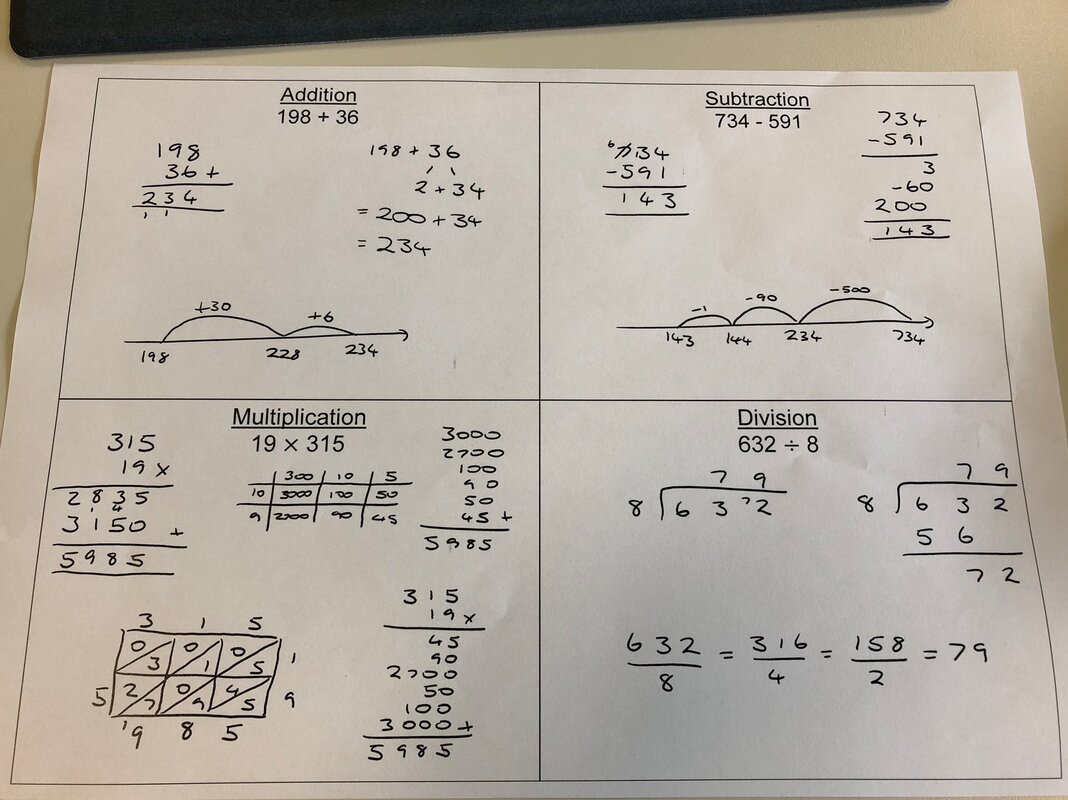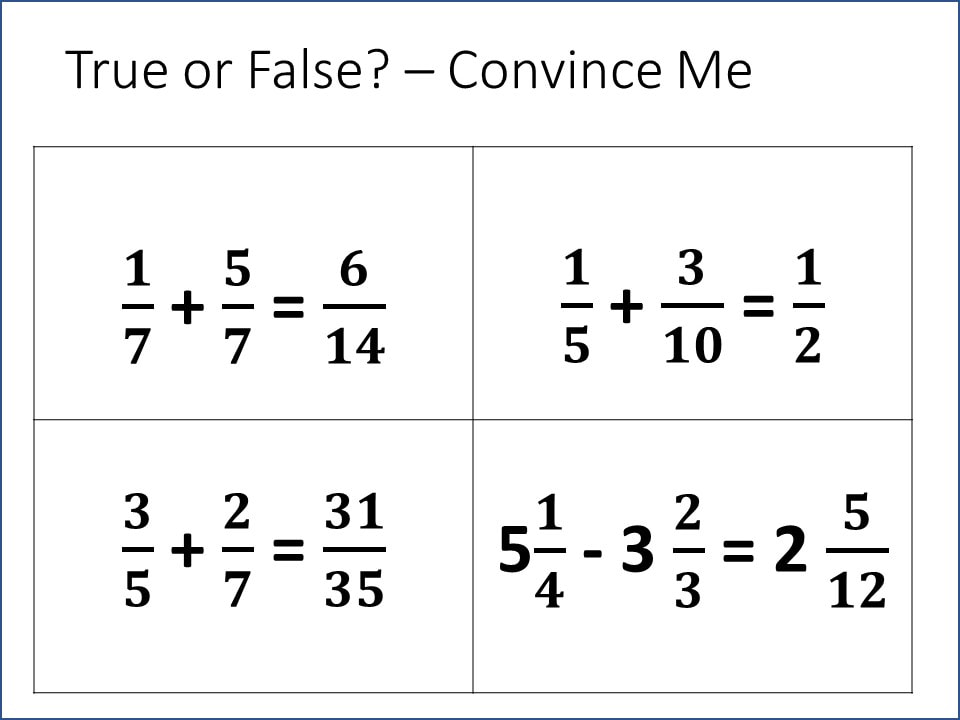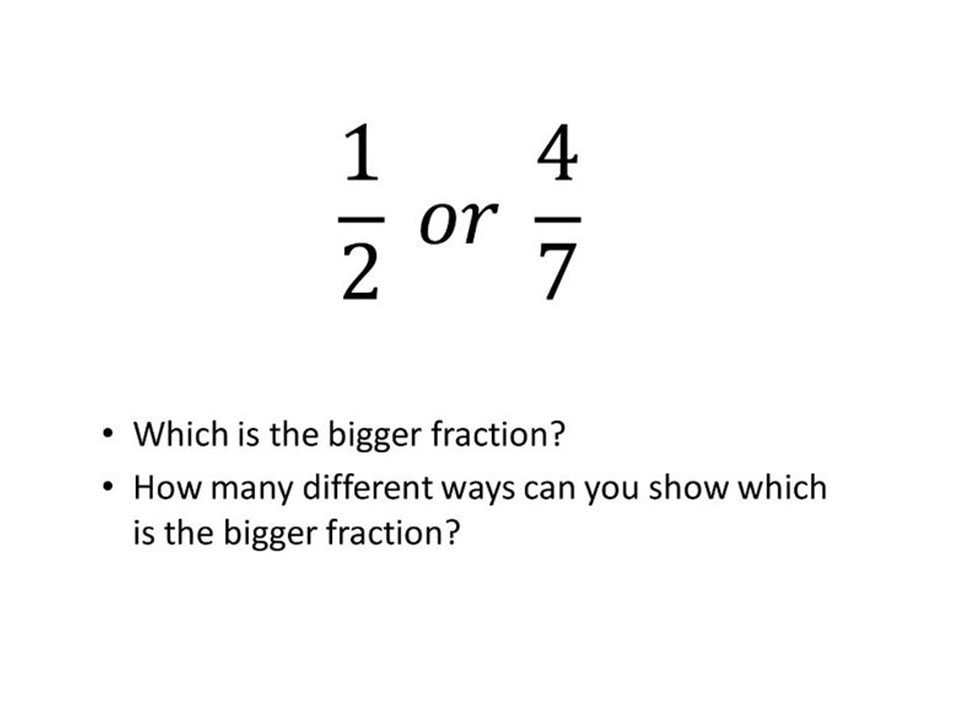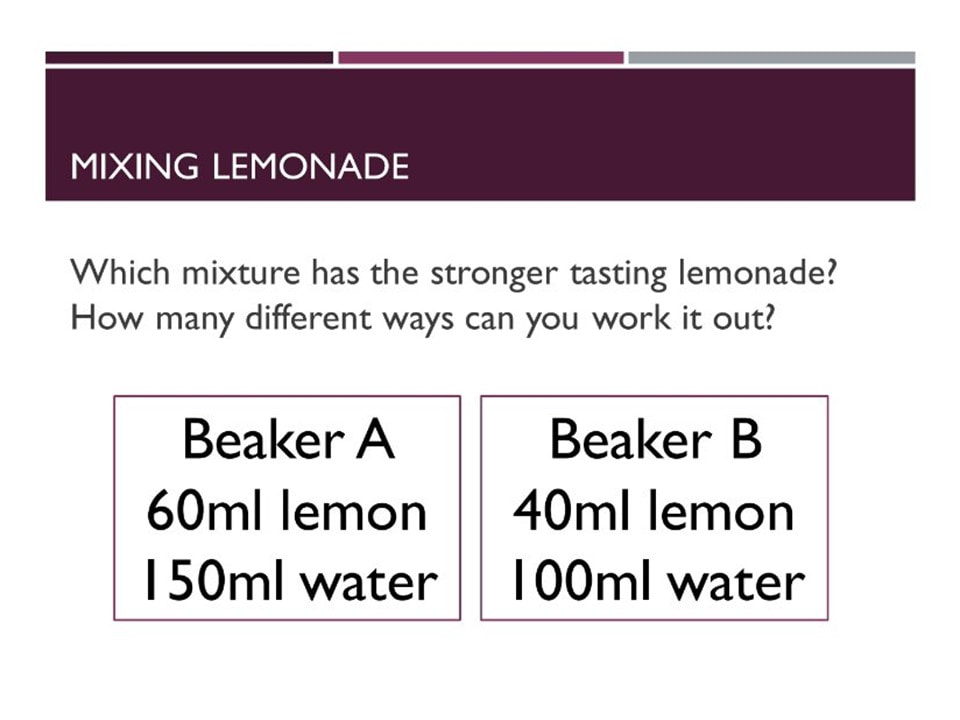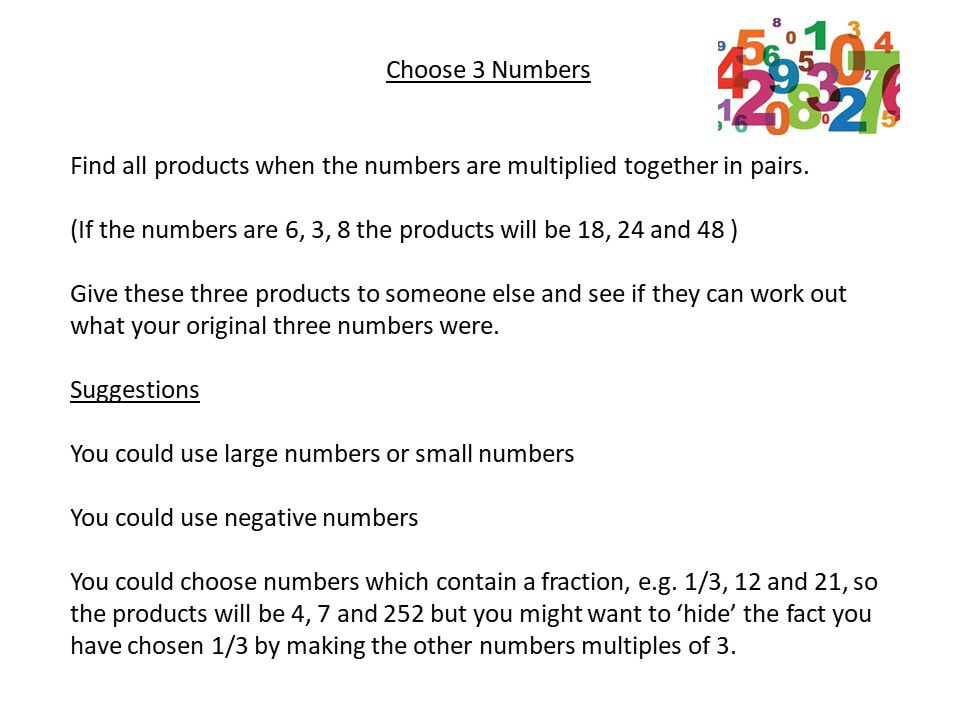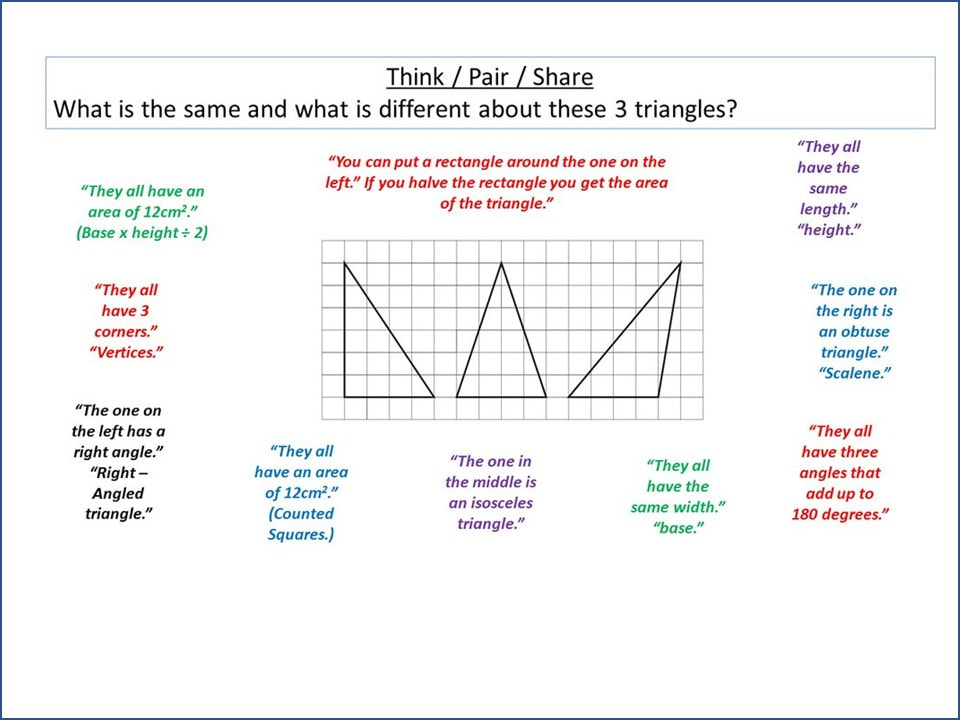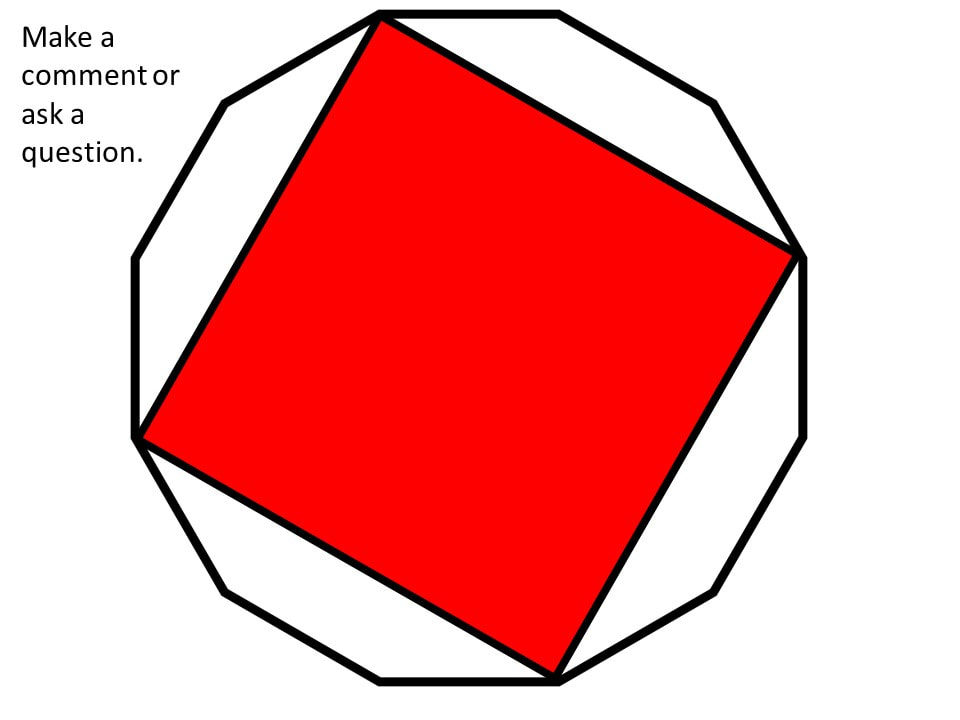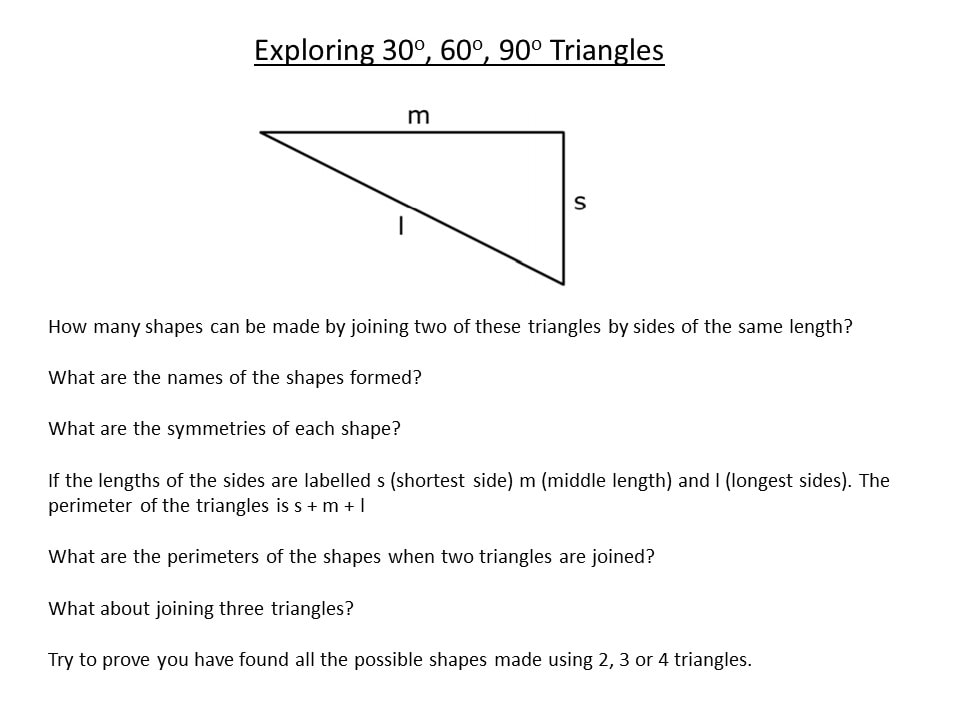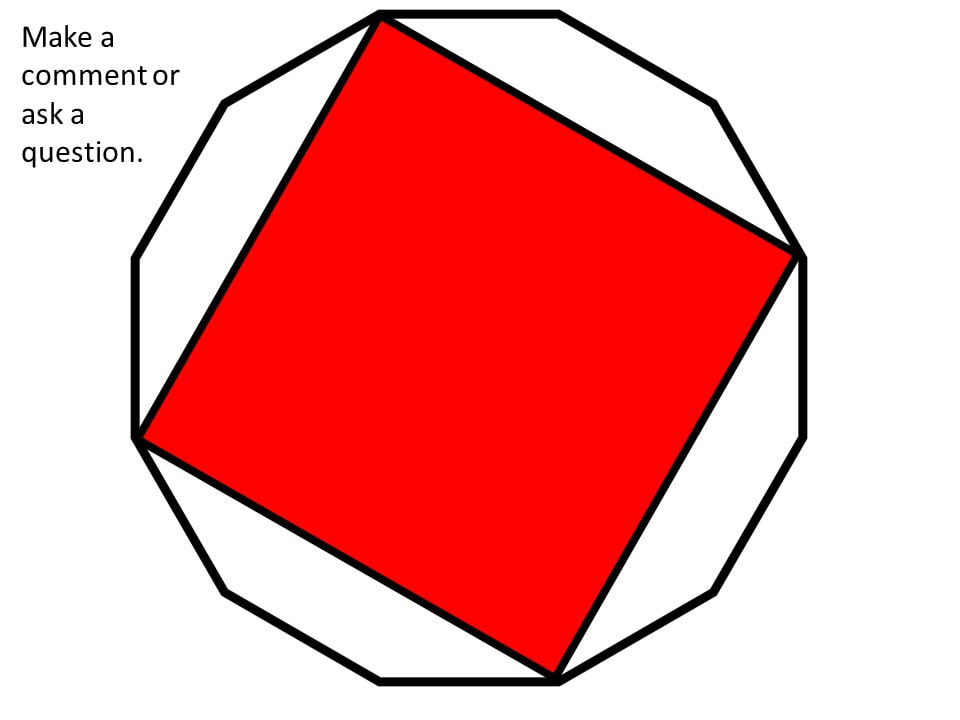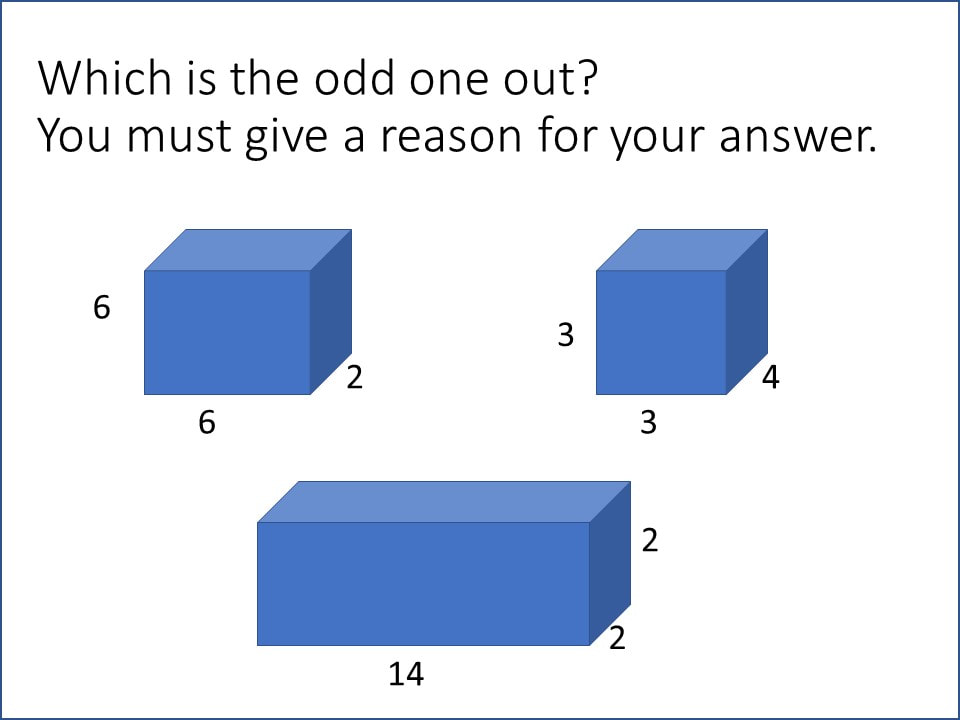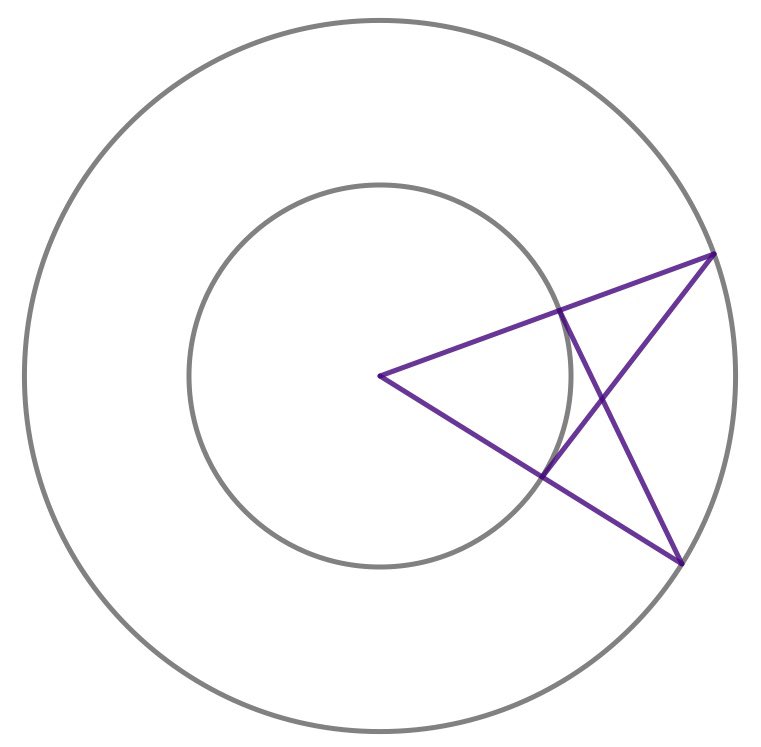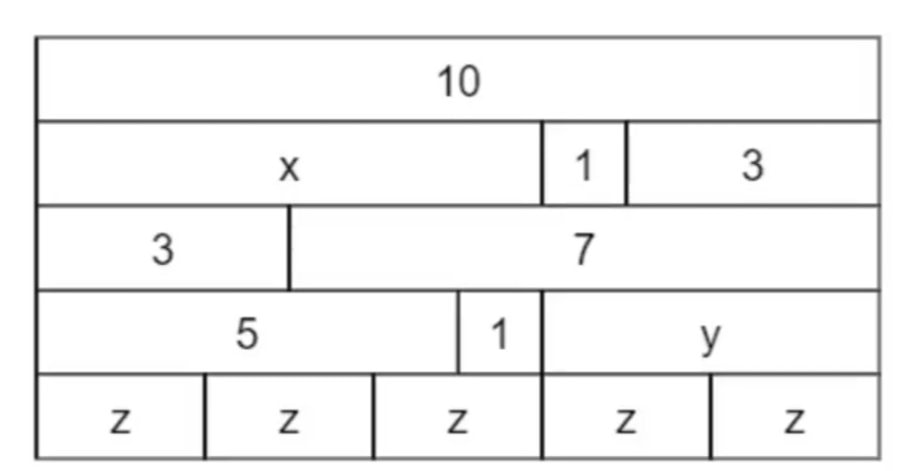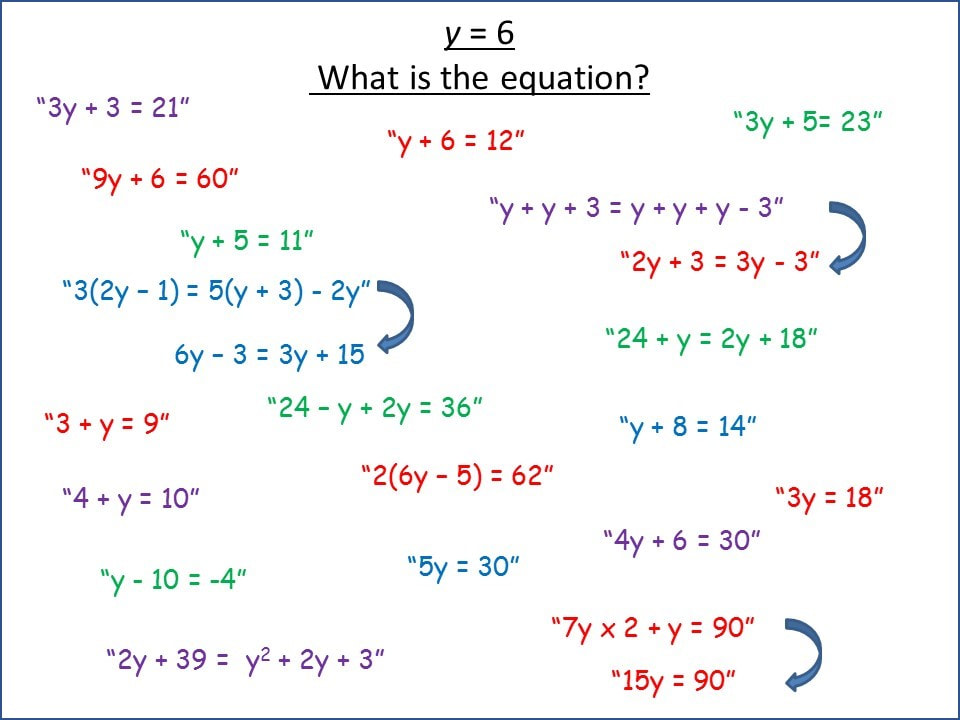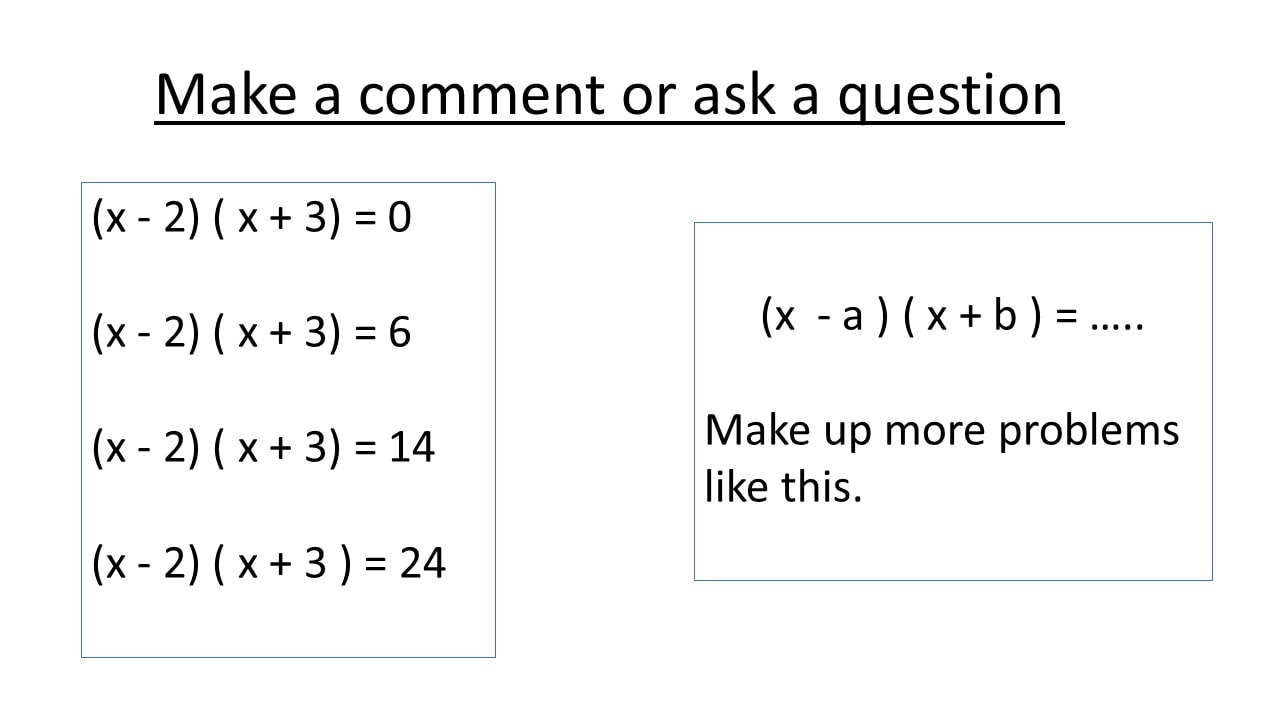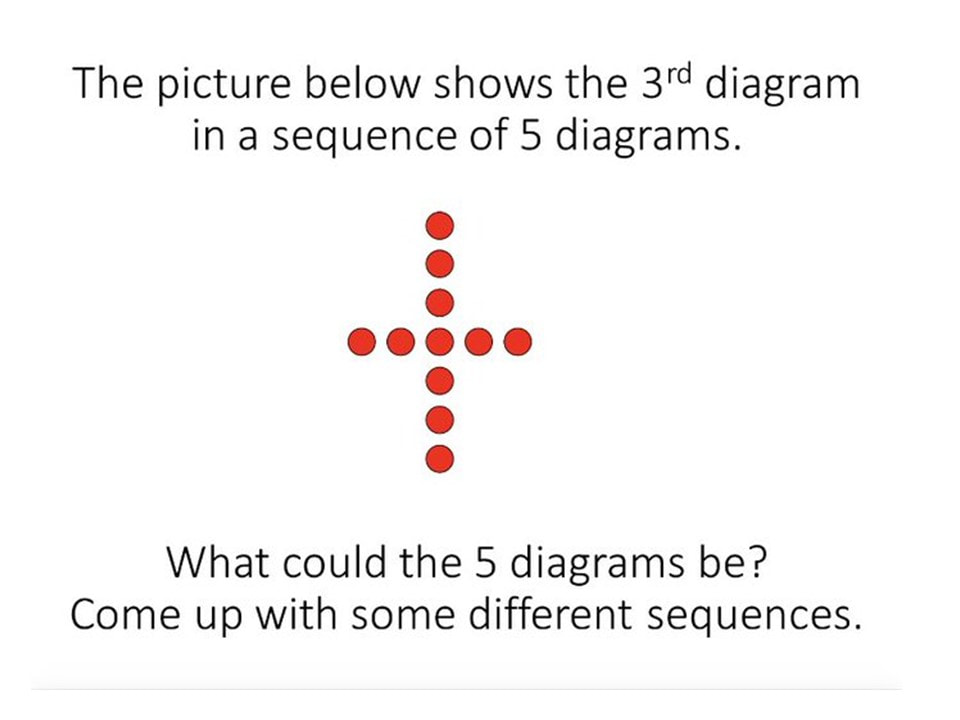Open Discussion Points
Why use an Open Discussion Point with a Mixed Attainment Class?
In a Mixed Attainment Maths lesson it is useful to start with an open discussion point that is accessible to all students. Open discussion points provide opportunities for pupils to explain their reasoning and ensure that all students can contribute in a meaningful way. They are a great way for teachers to assess prior understanding and identify and address misconceptions. Whilst students are thinking about the discussion point I find it really helpful to circulate the room listening to students conversations and noticing what they are writing down.This enables me to identify which students to call upon to contribute first, so that each contribution builds upon the previous ones. I also find it useful to think about the types of questions and comments I expect to hear and the type of misconceptions pupils commonly have. This prepares me to respond to my pupils' contributions and draw out any key ideas that I want to make sure are shared.
I would love to include as many examples of Open Discussion Points as possible from as many different contributors as possible, so if you teach Mixed Attainment Maths classes and have an Open Discussion Point that you would be willing to share, please email me [email protected] or contact me on twitter @helenhindle1
In a Mixed Attainment Maths lesson it is useful to start with an open discussion point that is accessible to all students. Open discussion points provide opportunities for pupils to explain their reasoning and ensure that all students can contribute in a meaningful way. They are a great way for teachers to assess prior understanding and identify and address misconceptions. Whilst students are thinking about the discussion point I find it really helpful to circulate the room listening to students conversations and noticing what they are writing down.This enables me to identify which students to call upon to contribute first, so that each contribution builds upon the previous ones. I also find it useful to think about the types of questions and comments I expect to hear and the type of misconceptions pupils commonly have. This prepares me to respond to my pupils' contributions and draw out any key ideas that I want to make sure are shared.
I would love to include as many examples of Open Discussion Points as possible from as many different contributors as possible, so if you teach Mixed Attainment Maths classes and have an Open Discussion Point that you would be willing to share, please email me [email protected] or contact me on twitter @helenhindle1
Number
Four Operations - Which methods are familiar?
This Open Discussion Point was designed by @PixiMaths and used with a Mixed Attainment Year 9 class. @PixiMaths gave this resource to the pupils and asked them which methods were familiar and which weren’t. Pupils were then asked if they could work out how the other methods worked and created their own examples using different numbers. The activity generated great discussions and allowed @PixiMaths to map out the rest of the lesson based on pupils' responses. @PixiMaths has a great website through which she shares resources she has created for the classroom. https://www.piximaths.co.uk/
Fractions - True or False? Convince Me
I asked pupils to choose one of the examples and explain why it was true or false. This lead to a discussion in which methods for adding and subtracting fractions were shared by pupils.
Fractions - Which is Bigger?
This Open Discussion Point was designed by @MrE_Maths who has a great website and blog where he shares resources for Mixed Attainment Maths Classes and reflections on his experiences teaching them. https://garethevansmaths.wordpress.com/
Proportion - Which is stronger?
This Open Discussion Point was designed by @MrE_Maths who has a great website and blog where he shares resources for Mixed Attainment Maths Classes and reflections on his experiences teaching them. https://garethevansmaths.wordpress.com/
Multiplication - Choose 3 Numbers
This Open Discussion Point was designed by @MichaelOllerton. This is just one idea of an activity pupils can do by starting with 3 chosen numbers. Below the image you will find a link to the PDF with other suggestions for 'Choose 3 Numbers' activities. Mike has tons of ideas for Open Discussion Points and Activities on his Publications and Resources Page - Ideas for Classrooms, here is the link https://mikeollerton.com/publications-resources/ideas-for-classrooms/
Geometry
Area of Triangles - What is the same and what is different?
This Open Discussion Point was adapted from a CIMT resource. I asked pupils to Think / Pair / Share what is the same and what is different about the three triangles. The annotations in colour are the pupils' responses.
Angles - Make a comment or ask a question
This Open Discussion Point was adapted from a diagram in 'Geometry Snacks,' a great book by Ed Southall and Vincent Pantaloni. I asked pupils to either write a comment or ask a question about the diagram. The comments ranged from observations about the number of sides and the name of the shape to explanations about how to find the sum of the interior angles and how to calculate the angle marked.
Exploring Triangles
This Open Discussion Point was designed by @MichaelOllerton. Mike has tons of ideas for Open Discussion Points and Activities on his Publications and Resources Page - Ideas for Classrooms, here is the link https://mikeollerton.com/publications-resources/ideas-for-classrooms/
Area - Make a comment of ask a question
This Open Discussion Point was also adapted from a diagram from the book 'Geometry Snacks' by Ed Southall and Vincent Pantaloni. I asked pupils to either write a comment or ask a question about the diagram. The comments ranged from observations about the number of sides and the name of the shapes to question about what information you would need to work out the areas of the different shapes and how you could calculate the fraction of the shape that is shaded.
Cuboids - Odd One Out
Pupils were asked to decide which cuboid was the odd one out and give a reason for their answer. This led to a rich discussion in which I was able to assess pupils' understanding of the concepts of Surface Area and Volume and identify and address any misconceptions.
Constructions - Make a comment or ask a question
This Open Discussion Point was designed by @TFrancome. Tom is the co-author of Practising Mathematics - Developing the Mathematician as Well as the Mathematics, which is a collection of ideas for classroom activities. It is available here https://www.atm.org.uk/Shop/Practising-Mathematics---Developing-the-Mathematician-as-Well-as-the-Mathematics-book/ACT107
Algebra
Equations - How many equations can you write?
This Open Discussion Point was designed by @McGuirea499. Pupils were shown the diagram with the questions, 'What equations can you write down?' and 'How many possibilities are there?' @McGuriea499 shares other Open Discussion Points like this one on his excellent website https://www.makeemthinkmaths.com/home and tweets using the hashtag #makemthink .
Equations - The answer is 6, what is the equation?
I asked pupils to write down as many equations as they could think of where the value of x was 6. The annotations in colour are the pupils' responses. This led to a great discussion in which pupils explained their methods for generating their equations, justified their equations and talked about how some of the suggested equations could be simplified.
Expanding Brackets - Make a comment of ask a question
This Open Discussion Point was designed by @TFrancome. Tom is the co-author of Practising Mathematics - Developing the Mathematician as Well as the Mathematics, which is a collection of ideas for classroom activities. It is available here https://www.atm.org.uk/Shop/Practising-Mathematics---Developing-the-Mathematician-as-Well-as-the-Mathematics-book/ACT107
Sequences - What could the other 5 diagrams be?
This Open Discussion Point was designed by @MrE_Maths who has a great website and blog where he shares resources for Mixed Attainment Maths Classes and reflections on his experiences teaching them. https://garethevansmaths.wordpress.com/
